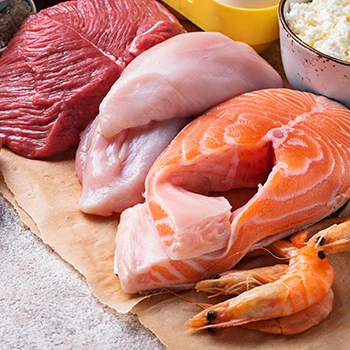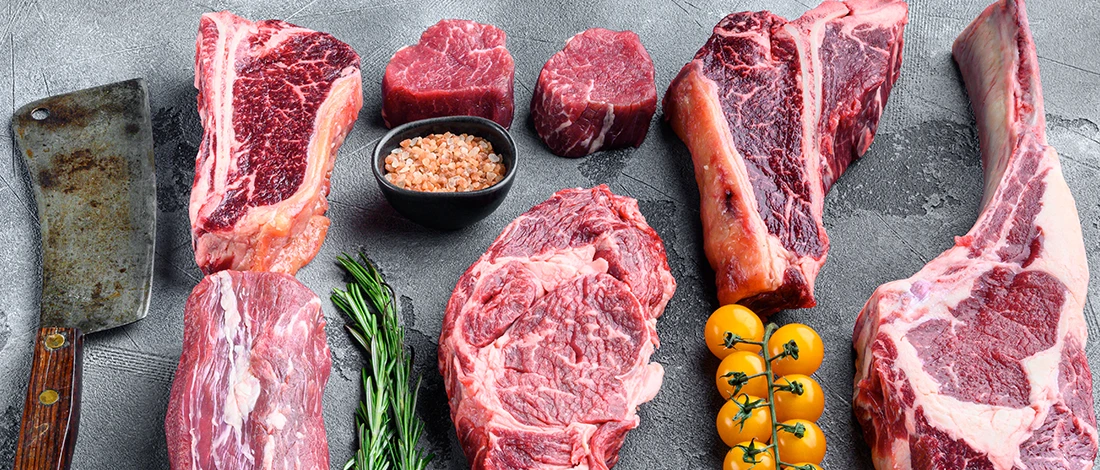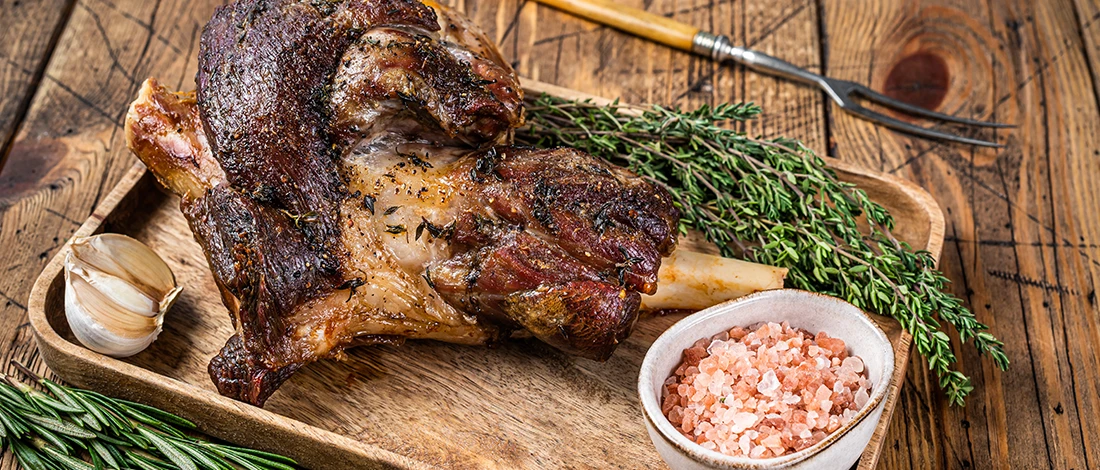You've probably heard the term "lean meat" before, and you suspect that this is a healthier choice, but what exactly is lean meat?
There is a lot to unpack in what seems to be a straightforward question. Carnivore Style’s team has done the research and tested different types of meats to understand which ones are considered lean and why they are beneficial for your diet.
So let me share the results of my experience and research on what meats are lean and why they should be a part of your menu.
Quick Summary
- Lean meat is low in total fat content, saturated fat, and cholesterol.
- Lean meat reduces the risk of several chronic health conditions compared to less lean options.
- Almost every animal meat has lean cuts available for the health-conscious consumer.
Definition of Lean Meat

Let's begin with the basics: What is meat?
According to the United States Department of Agriculture (USDA), meat is "the flesh of animals (including fishes and birds) used as food, that can be part of a healthful diet" [1].
This includes poultry, fish, and red meat such as beef, lamb, and pork.
Now that we've got that out of the way, let's define lean meat.
According to the USDA dietary guidelines, lean meats have fewer than 95 milligrams of cholesterol, 10 grams of fat, and 4.5 grams or less of saturated fat per 100-gram serving.
Extra-lean meat means that the same 100-gram serving has less than 95 milligrams of cholesterol, 5 grams of fat, and 2 grams of saturated fat [2].
These protein sources are healthier choices because they contain fewer calories and have less excess fat than other meats.
This lowers your overall fat intake while still being a good source of nutrition that includes vitamins, zinc, and other minerals.
"Diets that are high in saturated fats raise "bad" cholesterol levels in the blood, which in turn, increases the risk for coronary heart disease."
- United States Department of Agriculture
You can examine the nutrition label to identify lean meats at the store or look for cuts with little visible fat content.
Types of Lean Meat

There are many different lean meats, but some of the most popular options include skinless chicken and turkey, fish, and shellfish.
These meats are all relatively low in fat and calories, making them excellent choices for those looking to lose weight and improve their overall health.
Here are some specific examples of lean meats that are readily available in most markets:
- Beef - sirloin, bottom and top round, eye of round
- Pork - tenderloin, loin chops, loin roasts
- Lamb - leg, loin, shank
- Poultry - skinless chicken breasts and cutlets
- Fish - cod, flounder, tilapia, sole, bass, halibut
- Seafood - shrimp, crab, lobster, mussels, oysters, scallops, clams
Related Articles:
The Benefits of Lean Meat

There is no denying that meat is an integral part of the human diet, as it is a substantial source of iron, protein, and other essential nutrients.
However, not all meat is created equal. Lean meats offer many advantages over their fattier counterparts. Here are a few reasons you should make lean protein a staple in your menu.
1. It Is Lower in Calories
If you are watching your body composition or trying to maintain a healthy lifestyle, lean meats like skinless poultry or pork loin are a better choice because they are lower in calories.
This means you can get all the health benefits of protein and still reach your weight loss goals.
2. It Is Proportionally Higher in Protein
Protein is an essential part of the healthy diet that helps build muscle, repair tissue, and produces enzymes and hormones.
If you want to add more muscle mass or ensure your body has all the tools it needs to function correctly, a lean protein source is a great way to get the protein you need.
Nutritional guidelines recommend a good source of protein as a mandatory part of one’s diet.
3. It Can Help You Stay Fuller Longer
Another benefit of low-fat beef, fish, and poultry, like turkey and chicken, is that they tend to be more filling than fattier foods.
The extra protein means you are less likely to snack on unhealthy foods between meals or overeat at your next meal.
4. It Reduces the Risk of Heart Disease
One of the major health benefits of lean poultry or low-fat, grass-fed ground beef is that it helps reduce the risk of cardiac disease.
Heart disease is one of the leading causes of death in America, so eating things with a lower fat content and that reduce our saturated fat intake is wise.
5. It Reduces the Risk of Stroke
In addition to reducing the risk of cardiac disease, lean meats also help reduce the risk of stroke. A stroke happens when a blood vessel in the brain becomes blocked or bursts.
This can lead to serious problems, including paralysis, difficulty speaking, and even death.
6. It Reduces the Risk of Cancer
Cancer is another leading cause of death in America. While there are many different types of cancer, some of the most common include breast, prostate, and colorectal cancer.
Research shows that lean meats lower cancer risk than fatty or processed red meat [3].
7. It Has More Flavor
When you cook lean meat, most of the flavor comes from the meat itself, not the fat content. As a result, lean meats tend to be more flavorful than fatty meats.
FAQs
What Meats Are Not Lean?
Meats that are not lean include:
- Processed meat - sausage, hot dogs, bacon
- Beef - filet mignon, T-bone, New York strip, rib-eye, porterhouse, skirt steak
- Pork - shoulder roast, cutlets
- Poultry - dark meat, skin left on
- Fish - anchovies, sardines, trout, swordfish, salmon
Is Lean Beef Good for High Blood Pressure?
Yes, recent research shows that lean beef is good for high blood pressure [4]. This new data may eventually change the American Heart Association's recommendations for eating a primarily plant-based diet with whole grains to help lower blood pressure.
At Carnivore Style, we’re all about helping you make informed choices on your carnivore diet. Be sure to check out our other guides for more tips on incorporating lean meats into your meals and maintaining a balanced, healthy lifestyle.
References:
- https://ask.usda.gov/s/article/What-is-meat
- https://ask.usda.gov/s/article/What-does-lean-and-extra-lean-beef-mean-on-a-nutrition-label
- https://www.cancer.org.au/cancer-information/causes-and-prevention/diet-and-exercise/meat-and-cancer-risk
- https://www.sciencedaily.com/releases/2014/07/140717142049.htm







